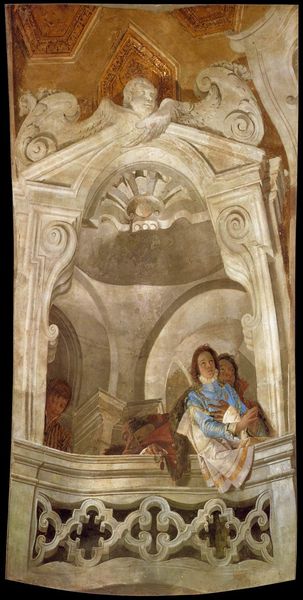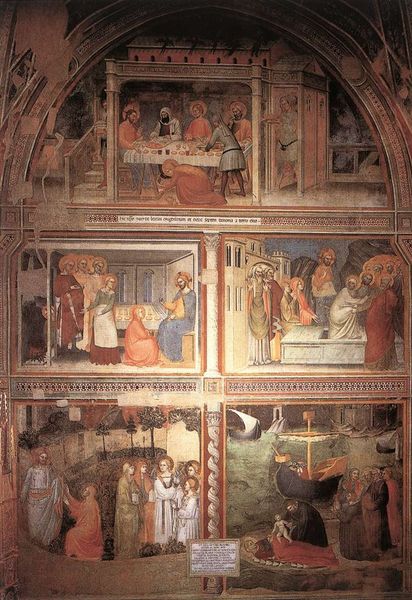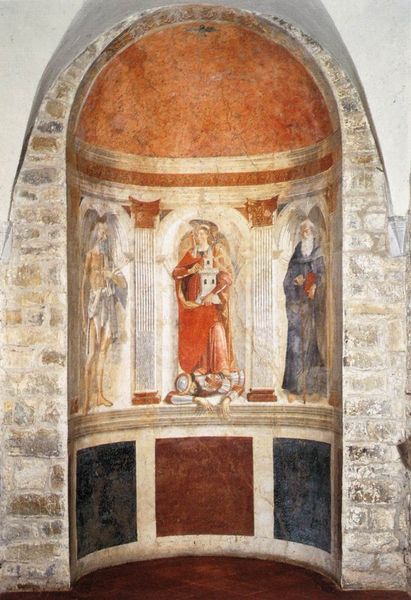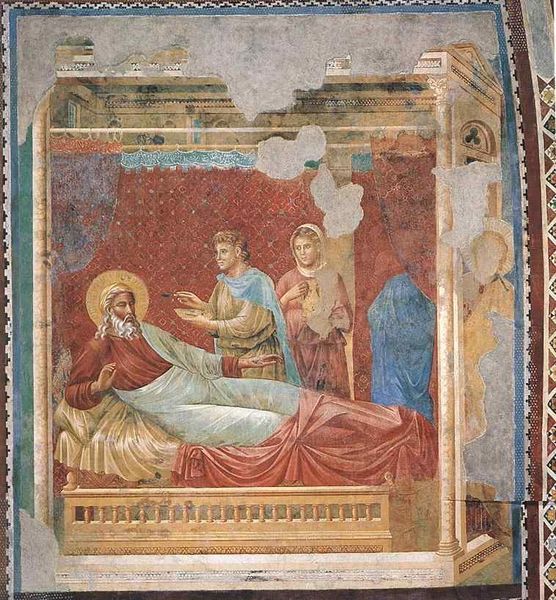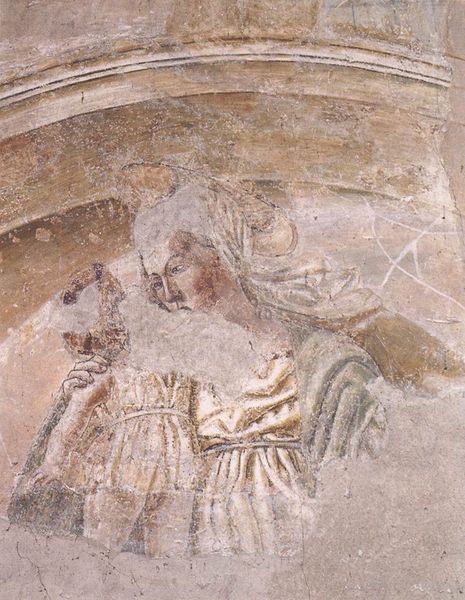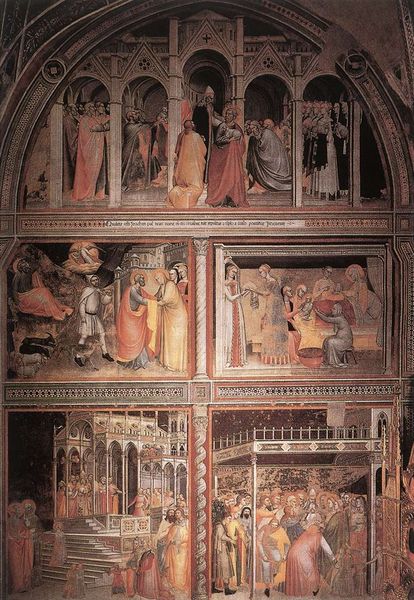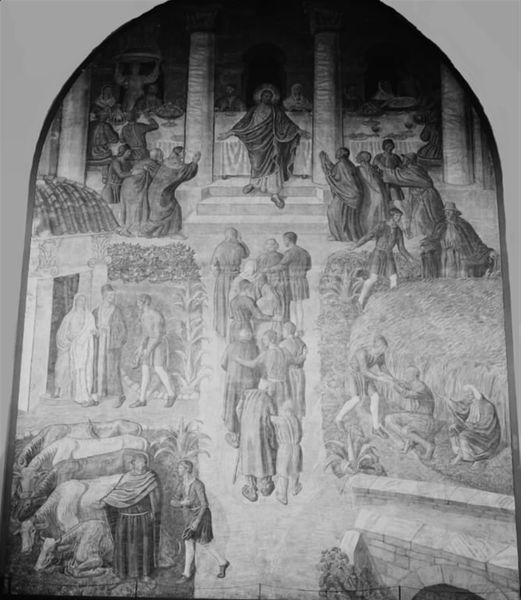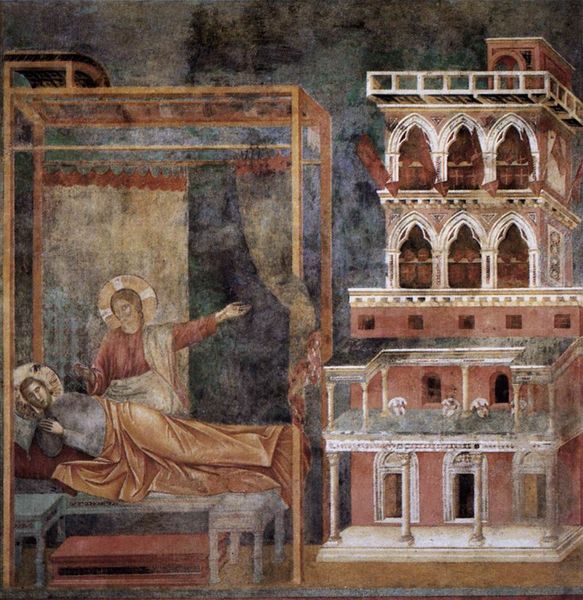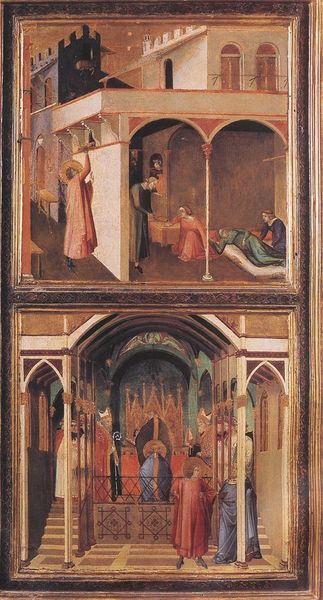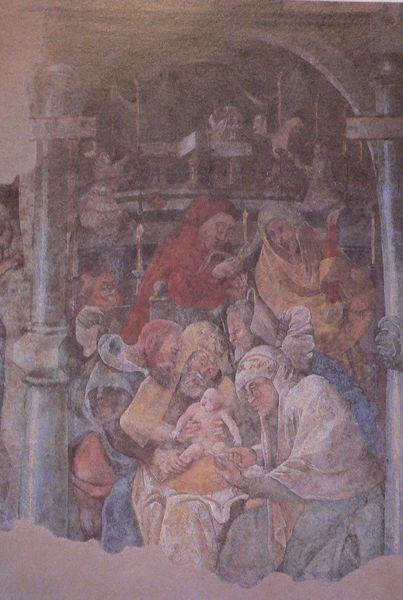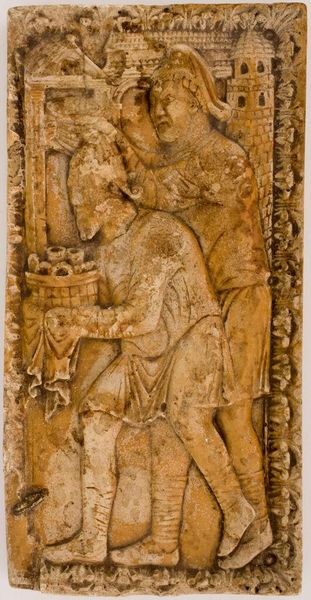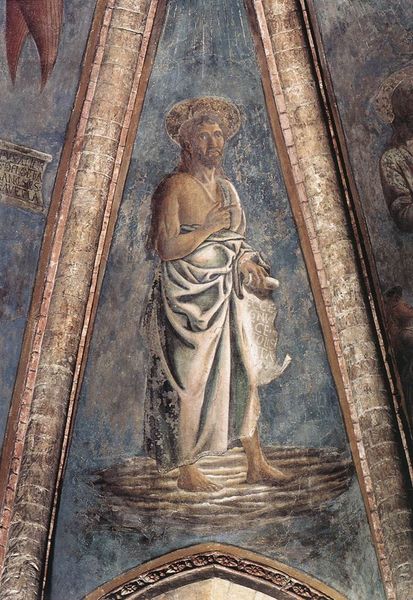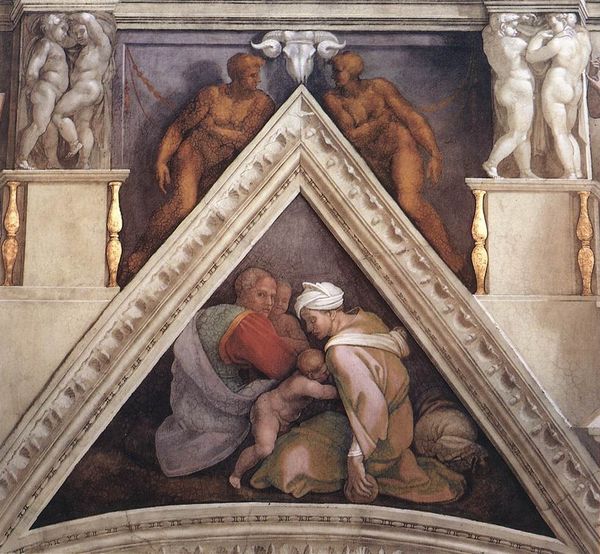
painting, fresco
#
portrait
#
water colours
#
baroque
#
painting
#
figuration
#
fresco
#
earthy tone
#
underpainting
#
group-portraits
#
history-painting
#
italian-renaissance
Dimensions: 410 x 188 cm
Copyright: Public domain
Curator: What an intriguing piece! We're looking at Giovanni Battista Tiepolo's "Worshippers," created around 1745. It seems to be an underpainting or fresco fragment, showcasing the artist's initial vision. Editor: My immediate reaction is the intense drama. The architectural framework feels almost precarious, heightening the vulnerability of the figures within. There’s a palpable sense of fervent devotion here. Curator: Absolutely. The Baroque period certainly prized theatricality, and Tiepolo was a master. Considering the societal role of religious art at the time, these depictions were vital in engaging and moving the populace. The perspective almost places us, the viewers, within the scene. Editor: Precisely! And those raised hands, the upturned gaze… it all speaks to an ancient desire for divine connection. Note how even unfinished, the tilt of their heads tells stories of hope and supplication. The underpainting quality gives a sense of immediacy – we witness faith in progress. Curator: It is thought this painting shows influence from the Italian Renaissance with his integration of historical elements. Editor: Looking closer, that repeated trefoil motif along the balcony is fascinating. It could represent the Trinity, but I also see it echoing earlier Gothic designs, hinting at a return to formalized religion even in an era increasingly concerned with worldly affairs. Curator: The setting, a stylized architectural box, directs attention to the characters. Also it evokes theatrical grandeur, a frequent trope in Tiepolo’s commissions for churches and wealthy patrons. The Baroque loved ornamentation. Editor: These aren't just figures caught in pious gestures, though. They are strategically placed to suggest layers of symbolic weight, reflecting years of theological pondering through careful deployment of gesture and glance. Curator: Studying art from past eras provides important glimpses into past societal values. And that connection remains today in many circles. Editor: Art serves as an active transmitter of values and beliefs, providing tangible continuity across centuries and culture. Hopefully our audience will contemplate those symbols in a modern setting.
Comments
No comments
Be the first to comment and join the conversation on the ultimate creative platform.
